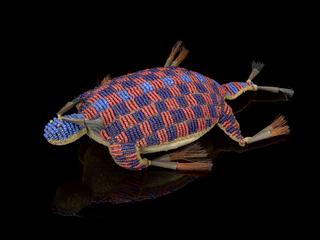
Wooden feeding funnel, Maori, New Zealand,1890-1925
- Made:
- 1890-1925 in New Zealand






Wooden feeding funnel, Maori, New Zealand
Within Maori culture these wooden feeding funnels are known as ‘Korere’. The funnel is made of wood inset with abalone shell and carved with interlacing ancestral designs. Korere feed high status individuals such as chiefs when the ability to consume food is restricted. This restriction can be due to activities called ‘tapu’, the origin of the word ‘taboo’ (this is questionable). ‘Tapu’ is used to describe a powerful or dangerous situation which must be controlled, as well as highly sacred situations, states or beings. One example would be during a tattoo ceremony when the chief has his face marked with traditional moko designs; he could be fed through the feeding funnel. This was for practical as well as ritual reasons; tattooing would cause excessive swelling, and water and healing agents could be passed down the funnel. The Korere would limit physical contact between the food and chief when both are considered charged with ‘mana’ or power, and therefore tapu. However, it is possible this example was carved for the early tourist market and never used for its traditional purpose.
N.B: 'Tabu' changed to 'tapu' and additional interpretations regarding the sacred nature of tapu as a state of being. [Shelley Angelie Saggar, 29th August 2019).
Details
- Category:
- Ethnography and Folk Medicine
- Collection:
- Sir Henry Wellcome's Museum Collection
- Object Number:
- A14850
- Measurements:
-
overall: 190 mm x 135 mm x 245 mm, .504kg
- type:
- feeding funnel
- credit:
- Wellcome Trust (Purchased from Stevens)




